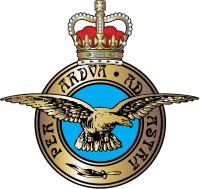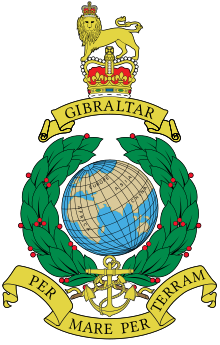Shipping from Europe with tracking number
Royal Air Force
| Royal Air Force | |
|---|---|
 | |
| Founded | 1 April 1918 |
| Country | |
| Type | Air force |
| Role | Aerial warfare |
| Size | 32,940 active personnel[1] 1,940 RAuxAF 3,200 reserve personnel[1][a] 832 operational aircraft[2] |
| Part of | British Armed Forces |
| Air Staff Offices | Whitehall, London |
| Motto(s) | Latin: Per Ardua ad Astra "Through Adversity to the Stars"[3] |
| March | Royal Air Force March Past |
| Website | www |
| Commanders | |
| Chief of the Air Staff | Air Chief Marshal Mike Wigston |
| Notable commanders | Lord Trenchard Lord Portal Lord Dowding |
| Insignia | |
| Ensign | |
| Logo | |
| Roundels |   |
| Fin flashes |   |
| Pilot's Flying Badge |  |
| Aircraft flown | |
| Attack | |
| Fighter | |
| Trainer helicopter | |
| Utility helicopter | |
| Patrol | |
| Reconnaissance | |
| Trainer | |
| Transport | |
The Royal Air Force (RAF) is the United Kingdom's aerial warfare force. It was formed towards the end of the First World War on 1 April 1918.[4] Following the Allied victory over the Central Powers in 1918, the RAF emerged as the largest air force in the world at the time.[5] Since its formation, the RAF has taken a significant role in British military history. In particular, it played a large part in the Second World War where it fought its most famous campaign, the Battle of Britain.[6]
The RAF's mission is to support the objectives of the British Ministry of Defence (MoD), which are to "provide the capabilities needed to ensure the security and defence of the United Kingdom and overseas territories, including against terrorism; to support the Government's foreign policy objectives particularly in promoting international peace and security".[3] The RAF describes its mission statement as "... [to provide] an agile, adaptable and capable Air Force that, person for person, is second to none, and that makes a decisive air power contribution in support of the UK Defence Mission".[7] The mission statement is supported by the RAF's definition of air power, which guides its strategy. Air power is defined as "the ability to project power from the air and space to influence the behaviour of people or the course of events".[8]
Today the Royal Air Force maintains an operational fleet of various types of aircraft,[9] described by the RAF as being "leading-edge" in terms of technology.[10] This largely consists of fixed-wing aircraft, including: fighter and strike aircraft, airborne early warning and control aircraft, ISTAR and SIGINT aircraft, aerial refueling aircraft and strategic and tactical transport aircraft. The majority of the RAF's rotary-wing aircraft form part of the tri-service Joint Helicopter Command in support of ground forces. Most of the RAF's aircraft and personnel are based in the UK, with many others serving on operations (principally over Iraq and Syria) or at long-established overseas bases (Ascension Island, Cyprus, Gibraltar, and the Falkland Islands). Although the RAF is the principal British air power arm, the Royal Navy's Fleet Air Arm and the British Army's Army Air Corps also deliver air power which is integrated into the maritime, littoral and land environments.
Royal Marines
| Corps of Royal Marines | |
|---|---|
 Badge | |
| Founded | 28 October 1664 |
| Country | |
| Type | Marines |
| Role | Expeditionary & amphibious warfare Arctic warfare Force Protection |
| Size | 7,760 Royal Marines 750 Royal Marines Reserve |
| Part of | |
| Naval staff offices | Whitehall, London, England |
| Nickname(s) | "Royals" "Bootnecks" "The Commandos" "Jollies" |
| Motto(s) | "Per Mare, Per Terram" (Latin) "By Sea, By Land" |
| Colours | Royal Navy Blue, Old Gold, Light Infantry Green, Drummer Red |
| March | Quick: "A Life on the Ocean Wave" Slow: "Preobrajensky" |
| Engagements | |
| Website | www |
| Commanders | |
| Captain General | The Duke of Sussex[1] (suspended duties) |
| First Sea Lord | Admiral Tony Radakin |
| Commandant General | Major General Matthew Holmes[2] |
| Insignia | |
| Non‑ceremonial flag | |
| Commando flash |  |
 |
| Her Majesty's Naval Service of the British Armed Forces |
|---|
| Components |
| History and future |
| Ships |
| Personnel |
| Auxiliary services |
The Corps of Royal Marines (RM) is an amphibious light infantry and also one of the five fighting arms of the Royal Navy.[3][4] The marines can trace their origins back to the formation of the English Army's "Duke of York and Albany's maritime regiment of Foot" at the grounds of the Honourable Artillery Company on 28 October 1664.[5]
As a highly specialised and adaptable elite light infantry force, the Royal Marines are trained for rapid deployment worldwide and capable of dealing with a wide range of threats. The Royal Marines are organised into a light infantry brigade (3 Commando Brigade) and a number of separate units, including 47 Commando (Raiding Group) Royal Marines, and a company strength commitment to the Special Forces Support Group. The Corps operates in all environments and climates, though particular expertise and training is spent on amphibious warfare, arctic warfare, mountain warfare, expeditionary warfare, and its commitment to the UK's Rapid Reaction Forces.
Throughout its history, the Royal Marines have seen action in a number of major wars often fighting beside the British Army – including the Seven Years' War, the Napoleonic Wars, the Crimean War, World War I and World War II. In recent times the Corps has been largely deployed in expeditionary warfare roles such as the Falklands War, the Gulf War, the Bosnian War, the Kosovo War, the Sierra Leone Civil War, the Iraq War and the War in Afghanistan. The Royal Marines have close international ties with allied marine forces, particularly the United States Marine Corps and the Netherlands Marine Corps (Dutch: Korps Mariniers).[6][7] Today, the Royal Marines are an elite fighting force within the British Armed forces, having undergone many substantial changes over time.[8]


